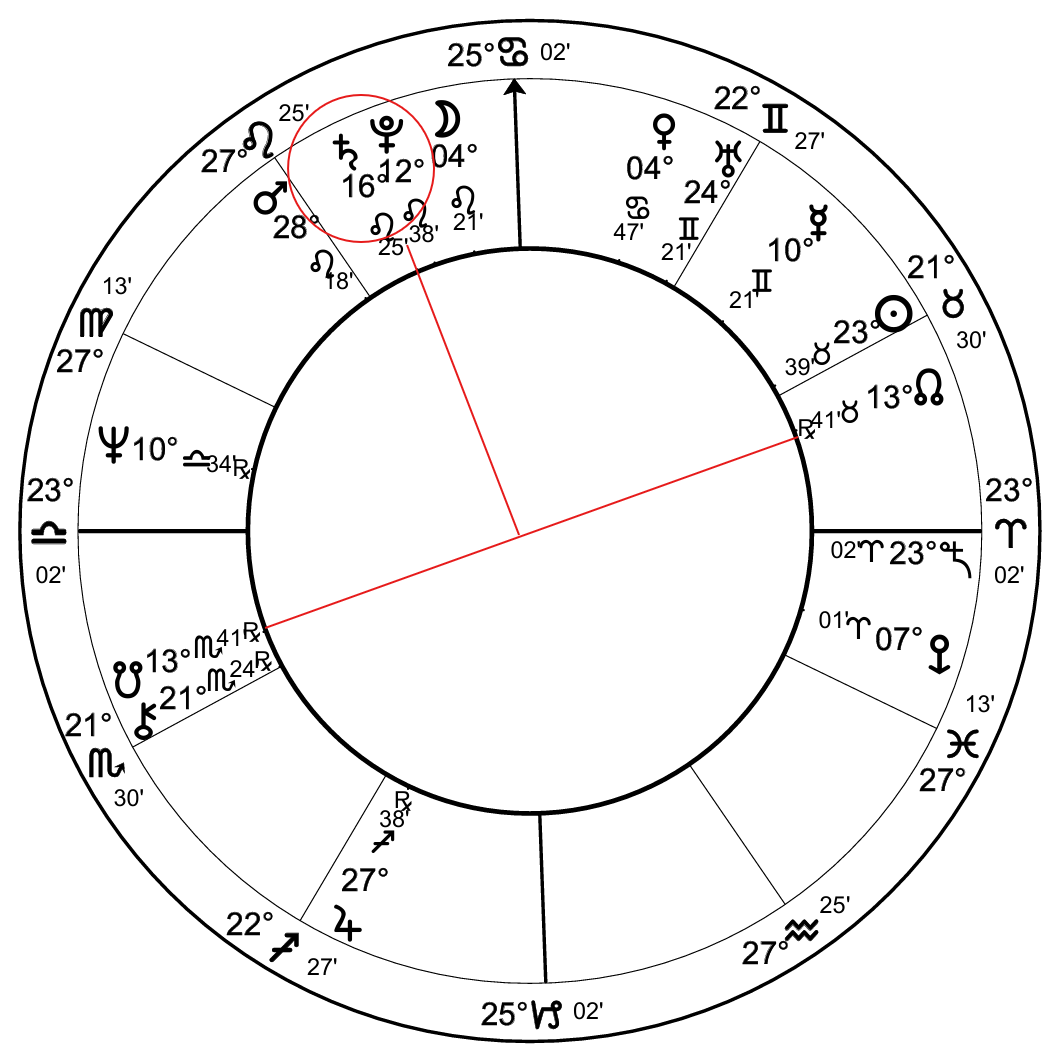While researching a book project and teaching a pilot course based on the concept, I rediscovered an astonishing passage in astrologer and Jungian analyst Liz Greene's book, The Outer Planets & Their Cycles: The Astrology of the Collective. Greene has had an impressive career, distinguished as both an astrologer and Jungian analyst, and more recently, an academic, publishing two extensive works on the Swiss psychiatrist Carl Jung. She has been highly influential in the development of modern psychological astrology and its offshoots.
Outer Planets contains lecture transcripts that Greene gave at a Wrekin Trust conference in the early 1980s, addressing the topic of mundane astrology and collective psychology. The book was published in 1983 and reissued in 1996. The latter edition is the version I'll reference here. The passage serves as an example of a poignant prophetic insight that was more true than Greene could have probably imagined when she said it, drawing from her integration of modern astrology and Jungian psychology.
Additionally, Greene's insights demonstrate the usefulness of cyclical cosmology, the study of history alongside the cyclical alignments of the outer planets to make predictions about future historical trends. This approach was pioneered by the French mundane astrologer Andre Barbault (1919-2019). Barbault's work significantly changed mundane astrology in the late 20th century.
I discovered Green's book over fifteen years ago in a used book section of a San Diego bookstore. I remember reading this specific passage then, but having little understanding of the situation involving Israel and the Palestinians (I was really quite ignorant, actually), I didn't grasp the broader significance of Green's larger point and warning. Interestingly, though, I flagged the page because it was my first introduction to the concept of enantiodromia, a term that Greene referenced as a Jungian coinage. Enantiodromia is a concept that goes back to pre-Socratic philosophy, specifically the work of Heraclitus (which influenced Jung and much of the Hermetic philosophy that Jung also drew from).
When I came back to this passage earlier this year, I was astounded by its relevancy regarding the plight of the Palestinians following the October 7, 2023, Hamas-led attacks against the Israeli state. I disucussed the issue in my second Saturn-Neptune essay, published October 2024, because I believed it deeply reflected the symbolism of the Saturn-Neptune alignment and that the grim reality of the subsequent genocide (vield as Israel's "right to defend itself") would became more upfront and mainstream by the time of its exactitude in early 2026 (specifically February). I refer readers to the section of that essay titled "The Genocide in the Room" for additional commentary and context.
When I published my second Saturn-Neptune essay, the issue of labeling the Israeli response to October 7 a genocide was highly controversial within the mainstream media and the political establishment (it still is, though the media blackout appears to be somewhat dissipating). In my article, which I intentionally published a week before the US Presidential election in November, I highlighted the profound symbolic reflection of that election, illuminating a deep spiritual and moral void at the heart of the American political establishment. The genocide was central to this.
For me, the choice between two brands (left or right) of US-sponsored genocide was more than deeply problematic; it was outright horrific and reflected the narcissistic and psychopathic underbelly of the US empire. Taking a "lesser evil" stance in that election wasn't an acceptable political strategy since both parties were complicit in not only allowing but participating in the systematic ethnic cleansing of the Gaza and occupied West Bank regions (through the constant flow of taxpayer funding and US weapons sent to the state of Israel).
This underbelly is nothing new: the horrors of America's founding were predicated on the enslavement and abuse of African people and the slaughter, displacement, and intentional cultural degradation of Native Americans. The previous war crimes perpetrated by the US (especially numerous following the September 11 terrorist attacks, and of course, the Vietnam War) included. In relation to the Israel/Palestine conflict, war crimes have become so blatant and deeply normalized within the machinations of politics, media, and cultural influence, America has devolved into something even more overtly insidious. The uniqueness of this conflict is not merely that it's happening but that it's happening in the light of day, in the social media era, where the evidence of genocide is instantly available via any mobile device. The images and the numbers of casualties are there for all to witness.
Denial of this reality (or worse, support for it) can be understood, in large part, via the dynamics of group psychology, a feature of Greene's book and conference lectures. However, she addresses the topic exclusively through the Jungian and astrological frameworks. On the political level, there is an obvious occurrence of groupthink happening (this is a well-accepted conception of what led to the invasion of Iraq in 2003). On a broader public level, Belgian psychologist Mattias Desmet's "mass formation" hypothesis is also worth contemplating, especially in understanding the mass of Israeli citizens, IDF soldiers, and a whole segment of US representatives who fully support the Israeli government's current strategy and policies. I'm not sure if this is Desmet's personal or professional view, but his work helps contextualize this kind of mass mobilization of evil. Desmet's work, The Psychology of Totalitarianism, focused on the SARS-CoV-2 pandemic response, so it still stands as hugely controversial (and largely ignored and dismissed). His broader historical reference point and parallel was the symptomology that led to the Holocaust during World War II, which he saw as driven by the dominant materialist worldview above all else. I'll discuss this more in my conclusion.
As Greene would argue, Jung's model of the psyche, his concepts of the shadow and the collective unconscious, also allow us an understanding of the Israel/Palestine conflict (in addition to numerous similar incidents). This is what allowed Greene to make the following insight regarding the founding of the Israeli state in 1948. Of course, Greene is not alone here. Numerous individuals have taken note of the potential dangers and irony associated with the founding of Israel in light of the conflict and tension it created with the regional Arab population. Notably, German/American historian Hannah Arendt, who expanded upon the concept of totalitarianism in the aftermath of the Holocaust, wrote about these dangers, especially in relation to the rising tide of Israeli nationalism, in her essay Zionism Reconsidered.
Greene's observations begin in "Lecture Two," in which she addresses some audience members' questions but primarily focuses the lecture on Saturn's conjunctions with the three outer planets (Uranus, Neptune, and Pluto). At this point, Greene segways into the Saturn-Pluto conjunction in tropical Leo, which occurred at the end of World War II. She brings up the fascinating observation that many of her clients born at this time (the time of the conjunction at the end of the 1940s) consistently revealed dreams involving the Holocaust (despite being born after it ended). Reincarnation is discussed as a possibility, but Greene perceives the Holocaust as a symbol rather than a literal image. Greene argued that while the reincarnation perspective may be valid, the symbolism of the dream says more about the client's present condition. Following this, Greene shares this insight:
"If you really want to get a strong taste of what Saturn-Pluto feels like, then you must look at the images of the last war [World War II], because the last war is a paradigm of Saturn-Pluto. It's a powerful symbol of what I feel this aspect is about, including the overwhelming Plutonian dictatorship and the crushed scapegoat that is hunted and persecuted, which is also in a strange way Plutonian. All the sexual sadism and dreams of racial purity and supermen are bound up with Saturn-Pluto...."
"Oddly, Israel was born as a state under that same Saturn-Pluto conjunction that followed the Holocaust. This is either a piece of immense cosmic irony, or it's something very profound. Unfortunately the behavior of this very great and dedicated new nation sometimes verges horribly close to the very thing that engendered its birth.* This suggests something very paradoxical, which Jung called enantiodromia. That means that if you polarize very violently against an opposite, you have a tendency to secretly become that opposite without realizing it. I feel this is the danger of polairsing with any of the outer planet conjunctions with Saturn. If you fight too hard against one side, you wind up being taken over by it unconsciously. The same danger lies in Saturn-Uranus and Saturn-Neptune. If Saturn tries to fight too hard against Neptunian idealism and romanticism by attempting to be incredibly practical, it tends to secretly behave like a religious fanatic bringing the kingdom of heaven down to earth, without even being aware of its messianic aura. It works the other way, too. Saturn-Uranus may polarise on the Uranian side and talk about freedom and change of the educational system and overthrowing of conventional authority, but unconsciously it will be as authoritarian and rigid and tyrannical as the very thing it kicks against."(emphasis added) [1]
In the 1996 edition, Greene added this footnote connected to the asterisked line about how Israel sometimes "verges horribly close to the very thing that engendered its birth":
"This comment was made in reference to the situation in the Middle East in 1980. The present situation between Israel and the Palestinians in the summer of 1982 tends to make me wish to repeat that comment even more forcibly."[2]
Greene was likely referring to the Sabra and Shatila Massacre in 1982, following the Lebanon War in which over a thousand (or several thousand) Palestinian and Lebanese civilians were killed by Israeli allies aided by the Israeli military. The event is only one of many to come involving the gradual displacement and elimination of the Palestinian people since the founding of Israel. The state's nationalistic Zionist pursuits have evolved into a colonialist project that has persisted for decades, a project that's now reaching a gruesome endpoint just three years following the Saturn-Pluto conjunction of early 2020.



























